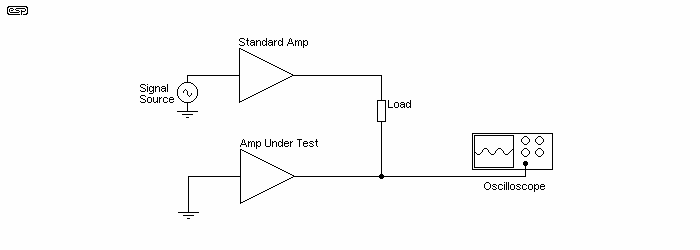From a Rod Elliot article. An objectivist for sure and an experienced designer;
”
The biggest problem is that no-one really knows what an amplifier will do when a reactive load reflects some of the power back into the amp's output. We can hope (without success) that the effects will be negligible, or we can try to make speakers appear as pure resistance (again, without success).
A test method already exists for this, and uses one channel of an amp to drive a signal back into the output of another. The passive amplifier is the one under test. It is also possible to use a different source amplifier altogether, since there is no need for it to be identical to the test amp. Use of a 'standard' amplifier whose characteristics are well known is useful, since the source will be a constant in all tests. Differences may then be seen clearly from one test to the next.
The method is shown in Figure 6, and is a useful test of the behaviour of an amp when a signal is driven into its output. This is exactly what speakers do - the reactive part of the loudspeaker impedance causes some of the power to be 'reflected' back into the amplifier. Since one amplifier in this test is the source, the device under test can be considered a 'sink'.
Figure 6 - Amplifier Power Sink Test
I have used this test, and although it does show some interesting results, the test is essentially not useful unless used as a comparative test method. The amplifier under test is also subjected to very high dissipation (well above that expected with any loudspeaker load), because the transistors are expected to 'dump' a possibly large current while they have the full rail voltage across them. There is a real risk of damaging the amplifier, and I suggest that you don't try this unless you are very sure of the driven amplifier's abilities.
We may now ask "Why is this not a standard test for amplifiers, then?" The answer is that no-one has really thought about it enough to decide that this will (or should) be part of the standard set of tests for objective testing of an amplifier. The results might be quite revealing, showing a signal that may be non-linear (i.e. distorted), or perhaps showing a wide variation in measured signal versus frequency. The result of this test with amps having extensive protection circuits will be a lottery - most will react (often very) badly at only moderate current.
If there is high distortion or a large frequency dependence, then we have some more information about the amplifier that was previously unknown. It might be possible to correlate this with subjective assessments of the amp, and gain further understanding of why some amps supposedly sound better than others. We might discover that amps with certain characteristics using this test are subjectively judged as sounding better than others ... or not.

